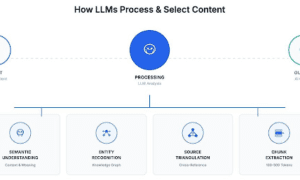Introduction
Web development is a constantly evolving field, with new tools and technologies being introduced at a rapid pace. As a web developer, it is crucial to stay updated with the latest tools and technologies in order to create efficient, user-friendly, and visually appealing websites. In this section, we will discuss some of the most commonly used tools and technologies by web developers.
Commonly Used Tools and Technologies by Web Developers.
1. HTML/CSS: Hypertext Markup Language (HTML) and Cascading Style Sheets (CSS) are the building blocks of every website. HTML provides the structure for a webpage, while CSS brings life to it by adding style and design elements. These languages are essential for creating any website layout and are considered the backbone of web development.
2. JavaScript: JavaScript is another fundamental language for front-end web development. It adds interactive elements such as animations, pop-ups, form validation, etc., making websites more engaging for users. Along with HTML and CSS, JavaScript forms the basis of front-end development.
3. Bootstrap: Bootstrap is a popular framework used for creating responsive websites that adapt to different screen sizes seamlessly. It includes pre-written CSS stylesheets and JavaScript plugins that help in designing mobile-friendly websites quickly.
4. jQuery: jQuery is a JavaScript library that simplifies complex tasks like DOM manipulation, event handling, animation effects, etc., making it an essential tool for front-end developers.
5. AngularJS/React/Vue.js: These are popular front-end frameworks used for developing dynamic single-page applications (SPAs). They provide features like data binding, routing, and a templating system, which make developing SPAs faster and more efficient.
6. PHP/Python/Ruby on Rails/.NET: These are server-side programming languages or frameworks used to build dynamic server-side scripts that interact with databases or other third-party services such as payment gateways or email services.
7. MySQL/MongoDB: Databases play a vital role in storing large amounts of data securely on a website. MySQL is an open-source database management system, while MongoDB is a NoSQL database that provides high scalability and performance.
8. Git: Git is a version control system used to manage code changes in a project. It allows developers to collaborate and work on the same codebase efficiently, making it easier to track changes and roll back if necessary.
9. Adobe Creative Suite: Web designers often use tools like Adobe Photoshop, Illustrator, or XD for creating visual elements such as logos, icons, graphics, etc. that are later integrated into the website by developers.
Day-to-Day Tasks of a Web Developer
A web developer is an essential part of any modern business or organization. They are responsible for creating and maintaining the online presence of a company, from designing and coding websites to ensuring they function properly and stay up-to-date with the latest technologies. In this section, we will delve deeper into the day-to-day tasks of a web developer.
1. Designing Websites
One of the primary tasks of a web developer is designing websites. This involves creating layouts, choosing color schemes, selecting fonts, and arranging content in an aesthetically pleasing manner. A good web developer has a strong sense of design principles and can create visually appealing websites that are also user-friendly.
2. Writing Code
Web developers are proficient in various programming languages, such as HTML, CSS, JavaScript, and PHP. They use these languages to write code that brings designs to life and adds functionality to websites. This includes creating responsive designs that adapt to different screen sizes, implementing animations and interactive features, as well as connecting databases for dynamic content.
3. Testing and Debugging
Once a website is designed and developed, it needs to be thoroughly tested for any bugs or errors before being launched. Web developers conduct various tests on different browsers and devices to ensure that the website functions smoothly without any issues. They also fix any problems that may arise during testing.
4. Content Management
In addition to designing and coding websites, web developers also manage website content on a daily basis. This involves updating existing information, adding new pages or sections when needed, optimizing images for faster loading times, and incorporating SEO strategies for better search engine rankings.
5. Client Communication
Web developers often work closely with clients throughout the development process to ensure their vision is realized in the final product. This requires effective communication skills, as they need to understand client requirements, provide updates on progress, incorporate feedback into their work, and troubleshoot any issues that may arise.
6. Maintaining Security Measures
With the increasing number of cyber threats, it is crucial for web developers to prioritize security measures. They need to constantly monitor and update websites with the latest security protocols to protect sensitive information, such as user data and payment details.
A web developer’s day-to-day tasks involve a combination of design, coding, testing, content management, client communication, and security maintenance. They play a crucial role in creating and maintaining an online presence that represents a company’s brand and helps it achieve its goals. Without their expertise and dedication, our digital world would not be as functional or visually appealing as it is today.
Challenges Faced by Web Developers
Web development is a constantly evolving field, with new technologies and techniques emerging all the time. As a result, web developers often face a number of challenges in their day-to-day work. In this section, we will delve into some of the most common challenges faced by web developers.
1. Keeping up with new technologies:
One of the biggest challenges for web developers is keeping up with the ever-changing landscape of web development. With new languages, frameworks, and tools being introduced regularly, it can be difficult to stay updated and ensure that their skills are relevant and competitive. This requires continuous learning and adaptability on the part of web developers.
2. Cross-browser compatibility:
With so many different browsers available today, ensuring that websites look and function consistently across all platforms can be a daunting task for web developers. Each browser has its own quirks and inconsistencies, which can lead to frustrating debugging processes.
3. Design vs. Functionality:
Web developers often have to strike a balance between design aesthetics and functionality when building websites. While clients may want visually appealing websites, they also expect them to be user-friendly and easily navigable. This can sometimes lead to conflicts between designers and developers as they try to find a middle ground.
4. Mobile responsiveness:
In today’s mobile-driven world, creating websites that are responsive across different devices is crucial for success. However, achieving this requires additional effort from web developers, as they must ensure that their code works seamlessly on different screen sizes without compromising on functionality or design.
5. Security concerns:
As more businesses move online, security has become an increasingly important concern for website owners and users alike. Web developers need to constantly stay updated with the latest security protocols in order to protect sensitive information from hacking attempts or data breaches.
6. Balancing multiple projects:
Another challenge faced by web developers is managing multiple projects simultaneously while meeting tight deadlines. This requires effective time management skills as well as the ability to prioritize tasks in order to ensure timely delivery of high-quality work.
Web development is a complex and dynamic field that presents its fair share of challenges. However, with continuous learning, adaptability, and effective problem-solving skills, web developers are able to overcome these challenges and create innovative and functional websites for their clients.
Misconceptions about Web Development and Web Developers
Web development is a vast and rapidly evolving field, which can often lead to misconceptions about what web developers actually do. Many people have a general understanding of what web development is, but there are still some misunderstandings that persist. In this section, we will address some of the most common misconceptions about web development and web developers.
1. Anyone can be a web developer.
One of the biggest misconceptions about web development is that anyone can do it. While it’s true that there are many resources available for learning how to code and build websites, becoming a skilled web developer takes time, dedication, and continuous learning. It requires an in-depth understanding of programming languages such as HTML, CSS, and JavaScript, as well as knowledge of design principles and user experience.
2. Web development is only about coding.
Another misconception is that web development solely involves coding. While coding is an essential aspect of web development, it’s not the only thing that developers do. They also spend time planning and designing websites before any code is written. This includes creating wireframes and mockups, determining site architecture, and considering user needs.
3. All web developers are the same.
Many people assume that all web developers are proficient in every aspect of website building, from front-end design to back-end programming, but this isn’t necessarily true. Some developers specialize in one area or technology, while others are proficient in multiple areas. For instance, some may focus on front-end design using CSS frameworks like Bootstrap, while others may specialize in back-end development using languages like Python or PHP.
4. Constantly changing technologies make web developers obsolete.
The ever-evolving nature of technology can make it seem like being a web developer would be a constant battle to keep up with new trends and advancements. However, skilled developers know how to adapt to new technologies quickly by continuously learning through online courses or attending workshops and conferences. Additionally, core programming languages and principles often remain the same despite any new developments.
5. Web development is a solo endeavor.
Contrary to popular belief, web development is not a solitary job where developers work in isolation. In reality, it involves collaboration with designers, project managers, and clients to create websites that meet specific needs and goals. Effective communication and teamwork are essential for success in this field.
Conclusion
Web developers play a crucial role in building and maintaining the websites we use every day. While there may be misconceptions about their job, it’s important to recognize the skills and knowledge they possess and the hard work they put into creating functional and visually appealing websites. As technology continues to advance, it’s likely that the role of web developers will become even more critical in our digital world.



































